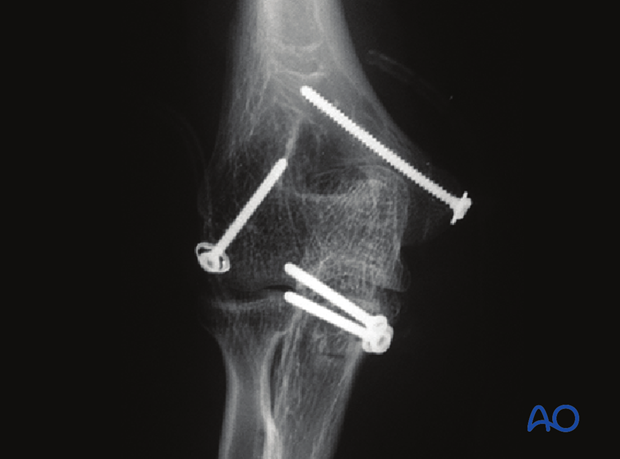Posterolateral approach to the proximal forearm
1. Skin incisions
A straight midline posterior incision can be used. The advantage of this is that it is extensile and offers the possibility to go both medial and lateral. Medial and lateral skin flaps can be created to access other muscle intervals to treat fractures of the radial head or coronoid and collateral ligament avulsions.
A shorter, more lateral incision is also possible but will not allow exposure of the medial side of the elbow.
The Boyd-Thompson approach can be developed through lateral submuscular dissection.
For the posterior incision (option 1), start the incision a few centimeters proximal to the tip of the olecranon. Some surgeons like to curve the incision slightly medially or laterally around the tip of the olecranon (to prevent scar irritation when leaning on the elbow) while others make a straight incision.
The more lateral incision (option 2) runs slightly more lateral and crosses directly over the lateral epicondyle.
Further dissection is the same independently on the skin incision. To illustrate the procedure were will show the more commonly used posterior midline incision.
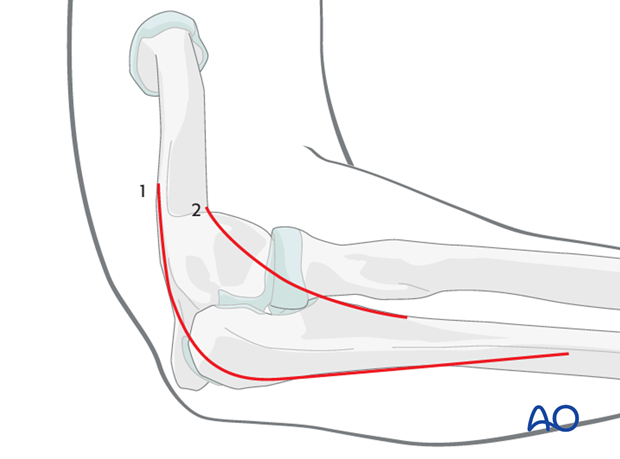
2. Posterior surface of olecranon
If a plate placed on the posterior surface of the bone curves around the tip of the olecranon, one can incise the triceps so that the plate lies directly on bone or place the plate directly on top of the triceps insertion (advantageous for some fractures with fragmentation of the olecranon).
Detach as little periosteum and muscle as possible. Articular fractures are visualized by mobilizing the proximal fragment and triceps.
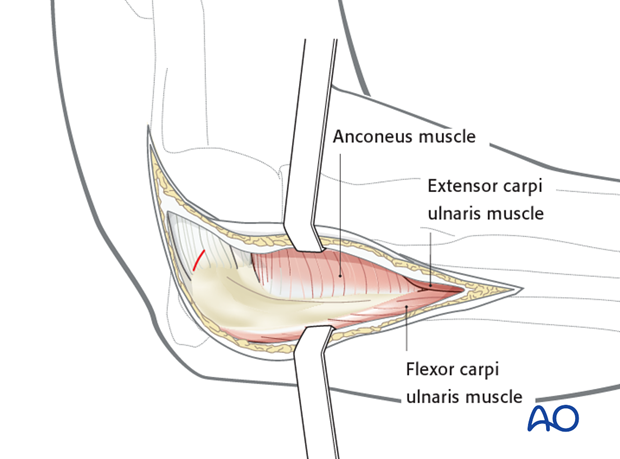
3. Posterior surface of the posterior ulna
A plate applied to the posterior surface of the proximal ulna will lie on the apex of the ulnar diaphysis. It is not necessary to elevate muscle or periosteum to apply the plate on the apex of the diaphysis.
One need only split the interval between the flexor carpis ulnaris and extensor carpi ulnaris.
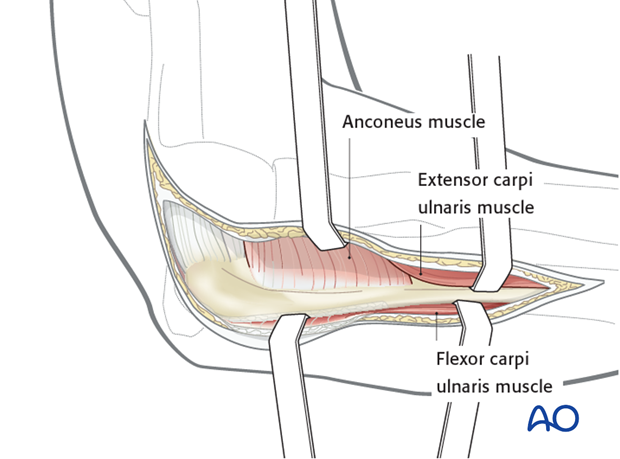
4. Radial head exposure
Now that the ulna exposure is completed, the radial head can now easily be exposed as well. Often the deep dissection has been done by the initial trauma making identification of the exact anatomic plane difficult. Rather than identifying the anatomical plane one can use the traumatic soft tissue injury as long as neurovascular structures are spared.
Note: Proponents of a dual deep dissection (one for the proximal ulna and one for the proximal radius) argue that this has a decreased risk for synostosis formation.
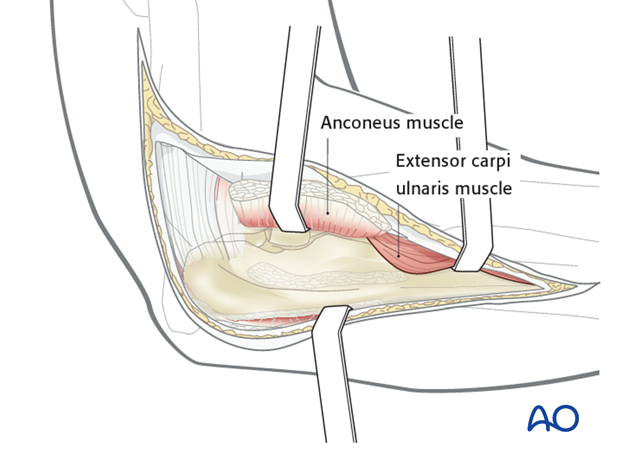
5. Variation with osteotomy of the lateral humeral epicondyle
A variation for lateral exposure with preservation of collateral ligaments and extensor tendon origin involves osteotomy of the lateral humeral epicondyle.
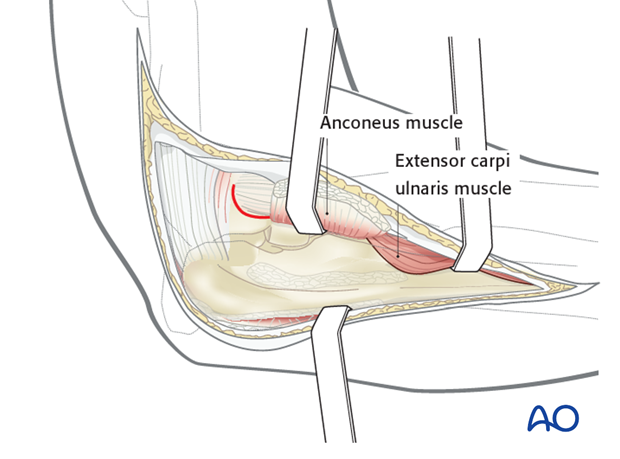
The soft tissues and osteotomized lateral epicondyle are reflected anteriorly to provide access to the proximal radius and ulna.
Repair after this approach requires refixation of the lateral epicondyle. The necessary screw hole can be predrilled before making the osteotomy.
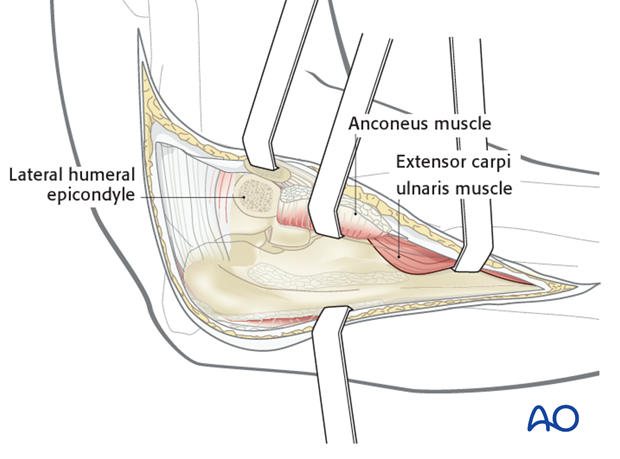
6. Variation with osteotomy of the medial humeral epicondyle
A variation for medial exposure with preservation of the medial collateral ligament and common flexor origin involves osteotomy of the medial humeral epicondyle. The soft tissues and osteotomized medial epicondyle are reflected distally to provide access to the medial elbow joint and proximal ulna.

Repair after this approach requires replacement and fixation of the medial epicondyle. The screw hole can be drilled before the osteotomy.
